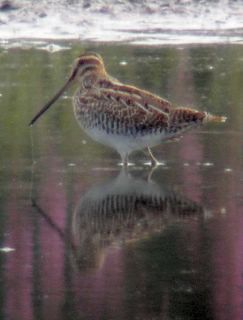A morning walk in and around Cubbington Wood turned up some nice birds this morning. On my way there I stopped off near another local village, Long Itchington, to look for Corn Bunting. Although these are basically brown birds with few distinguishing features (apart from a nice 'jangling keys' call), they are a good sighting for most birders because their numbers have plummeted over recent years - a victim of changing agricultural practices. It is probable that the bird only managed to establish itself in NW Europe thanks to new farming practices introduced way back (ie centuries ago). Now farming practices are changing again and they are in serious trouble in the UK.
Because of this I was delighted to see two birds, and hear several more calling. One thing that you can't accuse the Corn Bunting of doing is skulking - they have a preference for high, obvious song posts - telegraph wires in this case.
On to Cubbington, where the wood itself was deathly quiet - none of the usual woodland suspects.
The hedges and fields around it threw up better birds - a family of 8 or more Tree Sparrows (including juveniles, and my first 'treeps' in this area), various warblers (Chiffchaff including young, Whitethroat and a female Blackcap with a juvenile), at least four Buzzards at a nearby site (three flying low out of woods calling loudly and another calling from within), Yellowhammer and Green Woodpecker.
Good butterflies too, with Painted Lady, Peacock, Red Admiral and Gatekeeper among the few I was able to identify.








